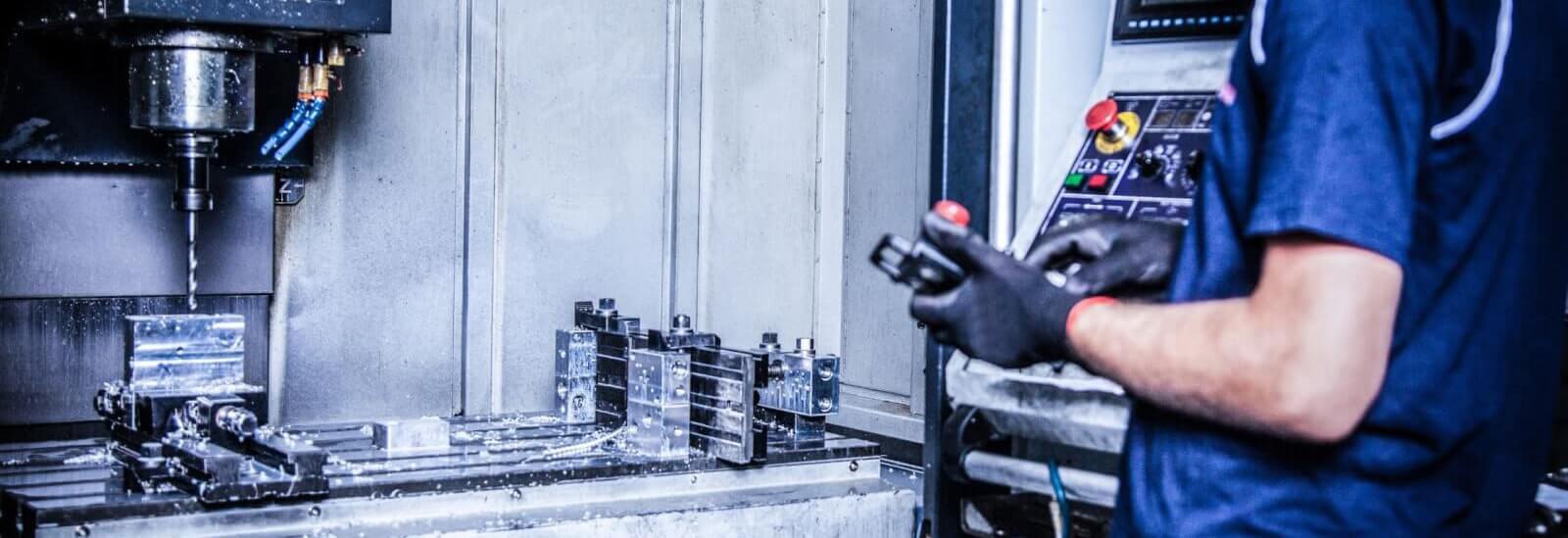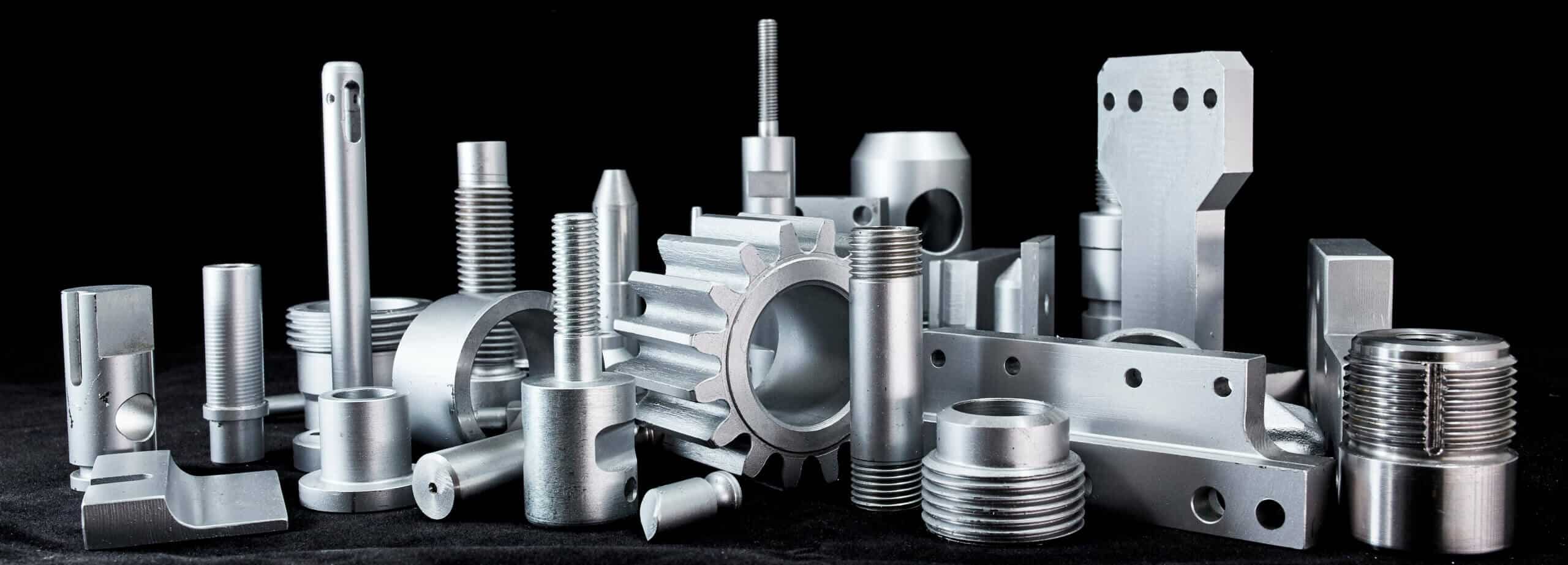Fasteners and Machining: Enhancing Toughness and Performance in Production
Fasteners and Machining: Enhancing Toughness and Performance in Production
Blog Article
Revealing the Details of Fasteners and Machining Procedures for Optimum Performance
In the realm of design and manufacturing, the option of fasteners and the details of machining processes play a critical function in establishing the ultimate performance and toughness of a product. From the seemingly straightforward task of picking the best type of bolt to the complicated precision machining techniques employed, every step in this procedure needs meticulous interest to information. As we start this exploration into the world of fasteners and machining, we will certainly uncover the subtle yet essential aspects that can considerably influence the efficiency and high quality of the final product, clarifying the often ignored aspects that can make all the distinction in achieving optimum performance.

Significance of Proper Bolt Selection
Choosing the proper bolts is essential in guaranteeing the architectural stability and longevity of any type of mechanical setting up. Bolts play an essential function in holding components together safely, with the appropriate option contributing dramatically to the total efficiency and dependability of the setting up. When choosing bolts, factors such as material compatibility, ecological conditions, load-bearing capability, and ease of installation should be meticulously considered to ensure ideal efficiency.
Inappropriate fastener selection can bring about a range of issues, including helping to loosen, rust, and even structural failure. Making use of fasteners that are not matched to the details requirements of the assembly can endanger its capability and position safety and security risks. Designers and designers have to meticulously assess the application needs and pick fasteners that fulfill or go beyond the necessary requirements and specifications.
Moreover, the appropriate fastener choice procedure includes examining the joint design, expected loads, vibration degrees, and possible thermal development or contraction to make sure that the picked bolts can withstand the operating conditions effectively. By prioritizing proper bolt option, manufacturers can enhance the high quality, durability, and efficiency of their mechanical assemblies.
Types and Characteristics of Bolts
An essential facet of mechanical settings up exists in recognizing the diverse kinds and distinct features of bolts made use of in different industrial applications. Fasteners are critical components that hold frameworks with each other, making sure stability and capability.
Screws are threaded bolts that are frequently used to sign up with two or more parts together. Nuts are inside threaded bolts that mate with bolts to hold parts together. Washing machines are thin plates that distribute the lots of a fastener, protecting against damage to the product being attached.
Understanding the features of each kind of bolt is crucial for picking the appropriate one for a certain application, guaranteeing optimal performance and reliability of the mechanical setting up. Fasteners and Machining.
Accuracy Machining Strategies for Efficiency
The elaborate layout demands of numerous bolts demand utilizing accuracy machining techniques for optimal efficiency in making procedures. Accuracy machining is critical in guaranteeing that fasteners meet the specific specifications needed for their desired application. Among the key strategies made use of in precision machining is Computer system Numerical Control (CNC) machining, which allows high levels of precision and repeatability in the manufacturing of fasteners. CNC equipments are qualified of performing complicated cuts and forming operations with minimal human intervention, resulting in enhanced effectiveness and uniformity in the production process.
By utilizing accuracy machining methods, suppliers can enhance the top quality of bolts, decrease material waste, and boost general manufacturing efficiency. The usage of sophisticated machining procedures helps Visit This Link make certain that bolts satisfy market criteria and customer expectations for efficiency and reliability.

Factors Affecting Machining Refine Performance
Different variables play a significant role in establishing the efficiency of machining processes in the manufacturing of fasteners. The initial vital variable is the selection of cutting tools. Choosing the ideal tools based on the product being machined, desired surface, and cutting speeds can considerably affect the effectiveness and quality of the machining process. Additionally, the cutting specifications such as cutting rate, feed rate, and depth of cut are crucial variables that affect efficiency. Fasteners and Machining. Maximizing these specifications based upon the particular needs of the bolt being produced is essential to accomplishing cost-efficient and precise machining.
Equipment rigidness and stability likewise play a critical function in identifying machining process performance. A secure maker with marginal resonances can boost precision and prevent tool wear, resulting in far better overall performance. The ability and experience of the device operator can not be taken too lightly. A well-informed operator can make real-time modifications, troubleshoot issues effectively, and guarantee that the machining procedure runs efficiently, inevitably affecting the last high quality of the fastener.

Quality Assurance Measures in Manufacturing
Aspects influencing machining process efficiency, such as reducing device choice and machine stability, directly influence the application of top quality control actions in production. Quality assurance procedures are important in ensuring that products satisfy the see page called for requirements and requirements. In the manufacturing procedure, various methods are employed to preserve quality standards. Examination and testing play a vital role in identifying any type of deviations from the desired end result. Regular maintenance of machining tools is likewise vital to maintain quality control. Calibration of equipments and devices is needed to make sure exact and exact production processes. In addition, carrying out standardized operating procedures and procedures can help in preserving uniformity and high quality throughout the assembly line. Quality control measures not just concentrate on the end item but additionally on every stage of the manufacturing procedure to protect against problems and mistakes. By sticking to stringent top quality control actions, manufacturers can improve consumer complete satisfaction, build a reputation for reliability, and eventually attain optimal performance in their machining procedures.
Verdict
To conclude, choosing the ideal bolts and utilizing precision machining strategies are important for optimum efficiency in manufacturing processes. Comprehending the kinds and features of fasteners, together with variables influencing machining process efficiency, can lead to improved effectiveness and high quality control actions. By focusing on these complexities, manufacturers can accomplish greater levels of performance and reliability in their products.
In the world of design and manufacturing, the selection of fasteners and the complexities of machining procedures play a critical duty in identifying the supreme efficiency and toughness of an item (Fasteners and Machining). One of the primary methods made use of Read More Here in accuracy machining is Computer system Numerical Control (CNC) machining, which allows high degrees of precision and repeatability in the manufacturing of fasteners. The use of advanced machining processes helps ensure that fasteners meet market requirements and customer expectations for efficiency and integrity
In verdict, selecting the appropriate fasteners and utilizing precision machining methods are vital for optimal performance in producing processes. Comprehending the types and qualities of bolts, along with aspects affecting machining process efficiency, can lead to boosted performance and top quality control procedures.
Report this page